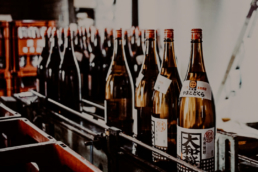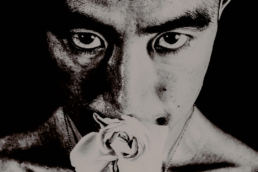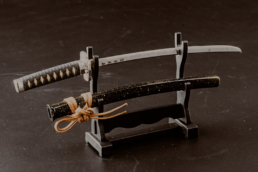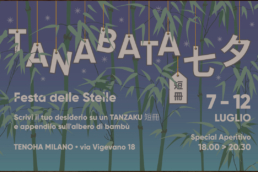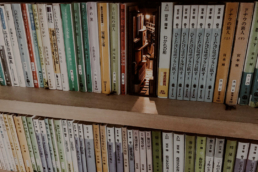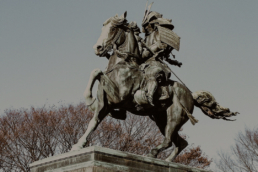The shōchū and its infinite pairings
If you follow us closely, you've surely heard about shōchū several times. I’m about to make a small recap just to remind you what we are talking about: shōchū is a distillate made from barley, sweet potatoes or rice. Generally, it contains 25% alcohol so it is lighter than vodka but stronger than wine. The production area of this distillate is the island of Kyūshū, but today it’s produced practically everywhere in Japan.
The shōchū and its infinite pairings
Author: SaiKaiAngel
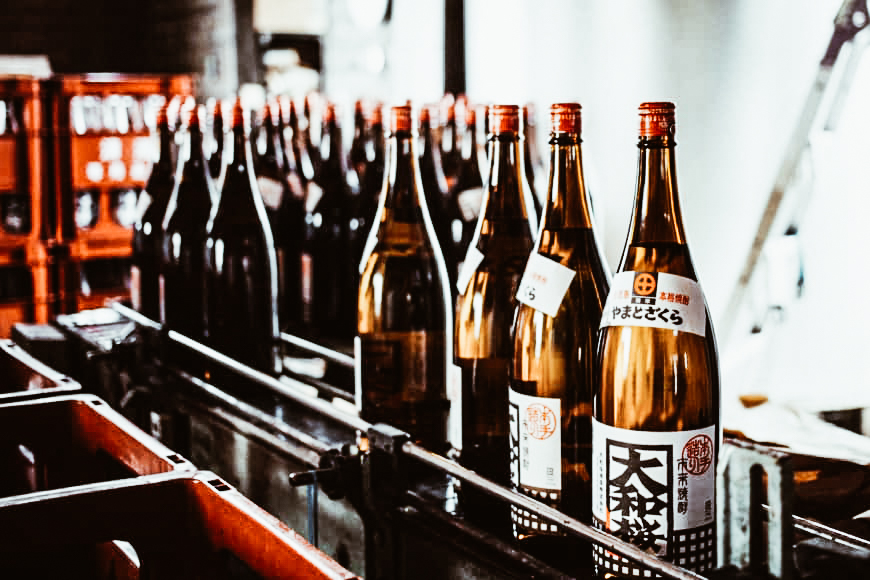
photo credits: japantimes.co.jp
The pandemic caused by COVID-19 has caused or even just resurrected many fears in the minds of many, from the fear of dying to the much lighter fear of gaining weight.
We are all, even more, looking for everything that can be healthy... well, it seems that shōchū may be just one of the things we should be looking for. Shōchū expert Stephen Lyman, the author of the book "The Complete Guide to Japanese Drinks" also nominated for a James Beard Award, has replaced beer and wine with shōchū and thanks to this he has lost seven kilos in seven months! Obviously, if we give importance to weight loss, it is absolutely not for an aesthetic issue, but to avoid serious diseases such as obesity.
The shōchū in 2003 has reached a sales volume even higher than the sales of sake! Its popularity is growing, driven also by its alleged medical benefits - ranging from the prevention of blood clots to the containment of obesity - which make it a healthy alternative to other alcoholic beverages.
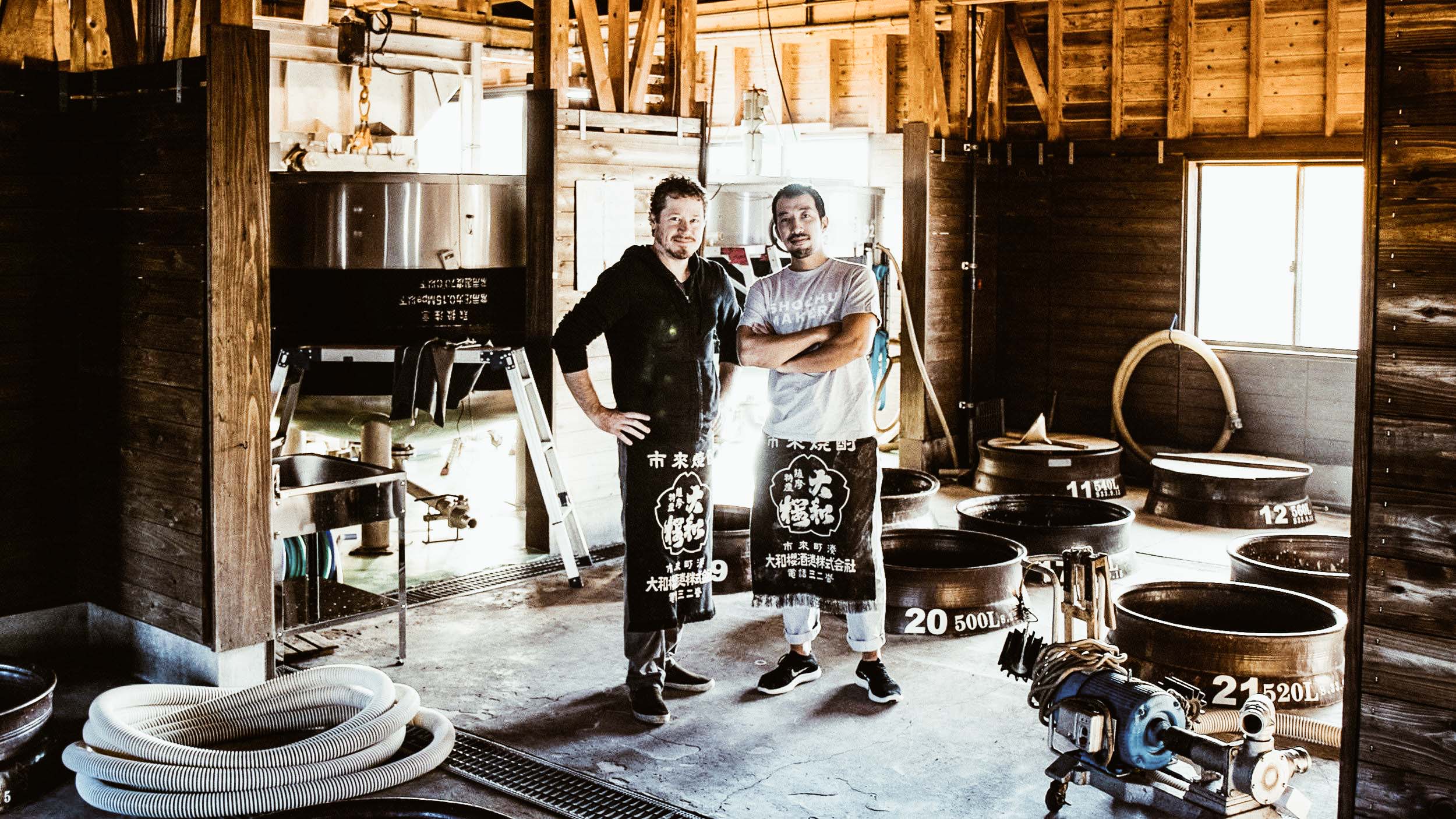
photo credits: japantimes.co.jp
Lyman, a native of New York, discovered this beverage in an izakaya bar in Manhattan more than 12 years ago and it was love at first sight. Lyman explains: "I've always loved wine and craft beer. Distilled drinks were a bit too strong for me and I was always looking for a drink that would have been perfect with food".
Shōchū is good for diet too
In 2011 Lyman's interest in shōchū became a real passion, and he started drinking it, even more, when a sports injury caused him a gain of weight. "I knew that shōchū was low-calorie, so I decided to give up wine and beer for shōchū six days per week," he says. Within a month, Lyman lost two kilos; after two months, five. Because of this, having found the shōchū could make him lose weight without altering his lifestyle, he began to take an interest in this Japanese drink and all possible pairings. Lyman says that the pairing of shōchū is possible with more than 50 possible ingredients! Richer shōchū notes work with heavier foods and, in particular, with miso dishes.
The barley shōchū obtained by vacuum distillation with a lighter and more aromatic style is perfect with white fish dishes, delicately flavoured sashimi and simmered. In general, the sweet-potato shōchū instead goes well with meat such as pork, while the kokutō (black sugar) shōchū, which is similar to rum, harmonizes with grilled meat. The full taste of shōchū is a surprising accompaniment to dark chocolate.
Also, the Iichiko Silhouette also called "the Johnnie Walker of shōchū" tastes like stone fruit and paired with soda water can be served with watermelon and mint soup. The shōchū Yamatozakura resists the sweet and earthy spices of Taiwanese braised pork with aniseed and cinnamon, while the Komaki Issho Bronze, a shōchū of sweet potatoes easy to eat, goes perfectly with a vegan stew of sweet potatoes, chickpeas and peanuts.
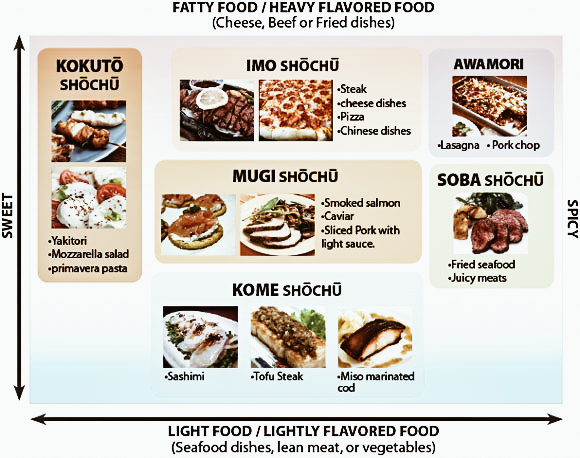
photo credits: mtcsake.com
But let's go more specifically and analyze some of the tastiest combinations:
Imo, sweet potato shōchū
Pork chops, pizza Margherita, fried tempura
Imo has a sweet aroma and taste, which goes well with substantial dishes or fried foods. It also is good with rich Chinese food or pizza with lots of cheese.
Mugi, derived from barley
Smoked salmon, caviar, sliced pork with lemon sauce
The mugi has a very clean and fresh taste. Technically this drink goes well with any kind of food, but it tastes better with a simple dish than with an oily dish. The aroma of barley enhances the vegetable sauce.
Kome, from rice
Sashimi, trout marinated in miso, tofu steak.
The kome has an umami (flavor) that goes well with any kind of food but particularly indicated with the delicacy of sashimi. It can also be enjoyed with rice dishes.
Kokuto, sugar cane shōchū
Yakitori (grilled chicken), pasta primavera, mozzarella salad
The Kokuto is made with sugar cane and can taste a bit fruity. The fragrance of kokuto is similar to the one of sweet syrup, but the taste is very simple and delicate and not extremely sweet. This particular taste can bring out the original flavours of the food and is indicated with soy sauce dishes that have a slight sweetness.
Awamori shōchū
Porkchop, lasagna, banana pancake
Awamori has a special aroma and rich flavour that goes well with spicy or heavy foods such as cheese and creamy dish.
Soba shōchū
Penne arrabbiata, fried oysters, meatballs
The characteristics of soba are very mild and clear-cut but at the same time a little bit bitter. This can be enjoyed with slightly spicy foods or juicy meats.
I'm sure that as soon as you've finished reading this article you're already looking for the perfect shōchū for you, are you ready for a completely new adventure and completely different lunches and dinners?
Japan History: Yukio Mishima
Yukio Mishima pseudonym of Kimitake Hiraoka (Tokyo, January 14, 1925 - Tokyo, November 25, 1970), was a Japanese writer, playwright, essayist and poet and this year marks the 50th anniversary of his death.
50 years since Yukio Mishima's death
Author: SaiKaiAngel
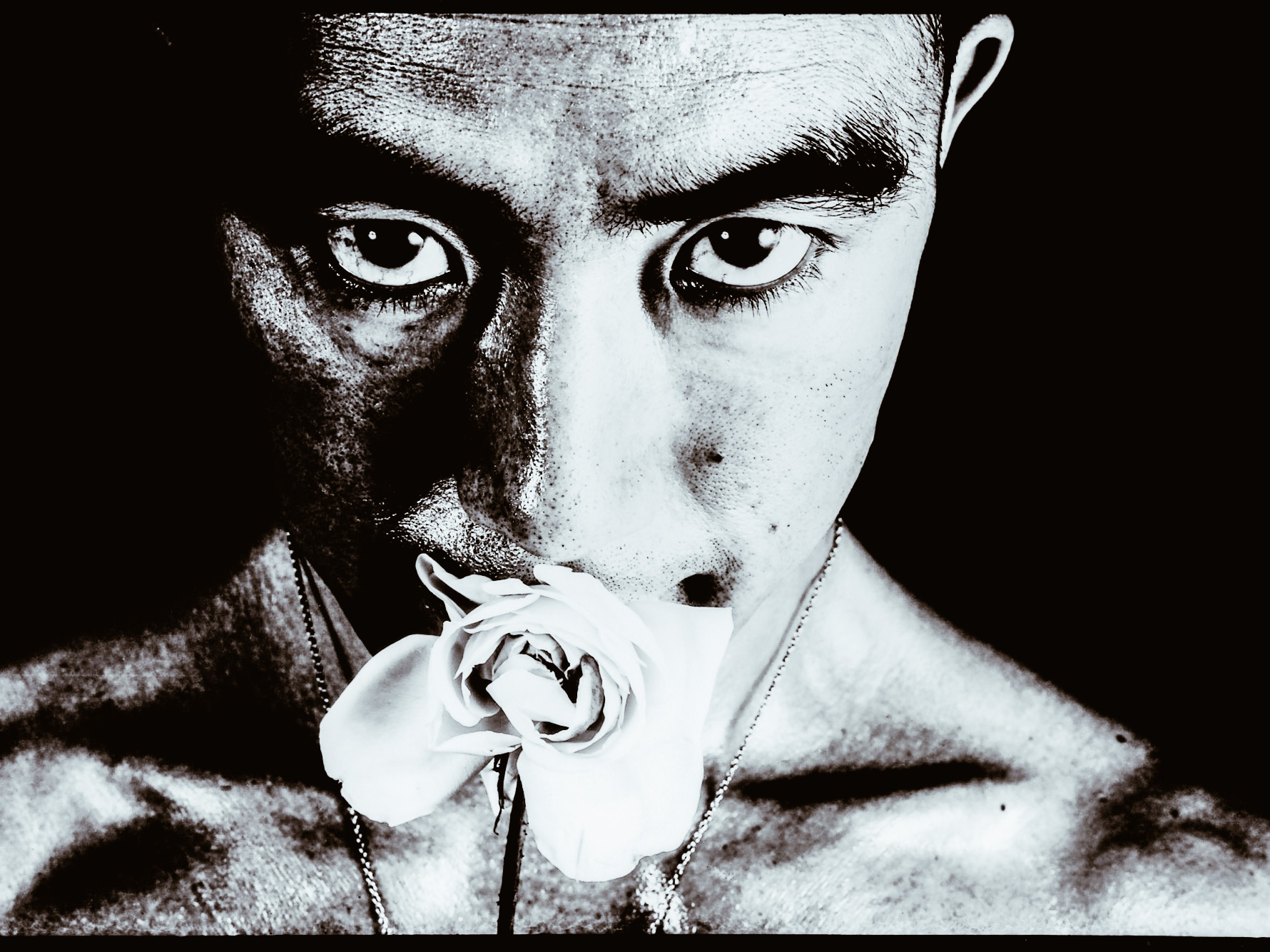
photo credits: @williert
Mishima was a highly controversial character, considered close to Fascism in Europe and, according to many critics, a nostalgic Japanese nationalist. Alberto Moravia called him a decadent conservative. The two met in Mishima's Art Nouveau western home in a suburb of Tokyo. Yukio Mishima, on the other hand, called himself apolitical and anti-political. Strongly patriotic, he also inspired numerous characters of his works, and the cult for the Emperor, seen as an abstract and/or semi-divine ideal, the embodiment of the essence of traditional Japan.
Kimitake Hiraoka was one of the few Japanese authors to have immediate success also abroad. His numerous works range from the real novel to the modernized and readapted forms of traditional Japanese theatre Kabuki and Nō. Yukio Mishima has revisited the Nō theatre in a modern key.
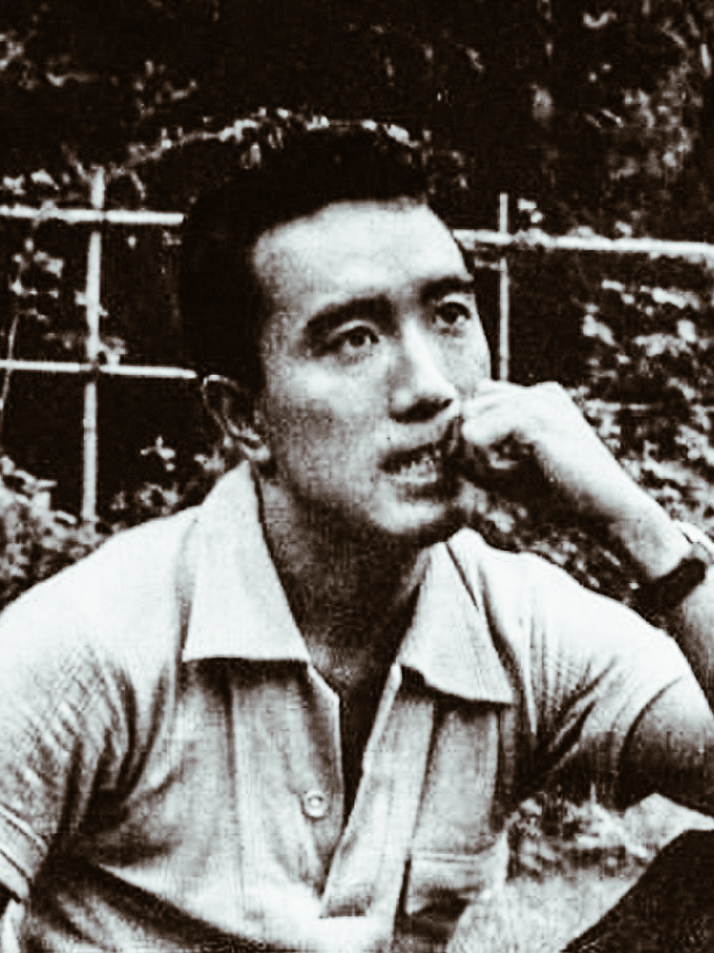
photo credits: thereaderwiki.com
The life of Yukio Mishima
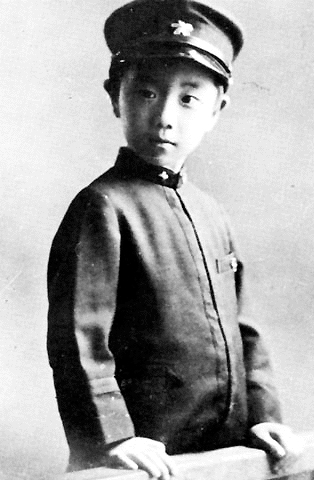
photo credits: wikipedia.org
Yukio Mishima was born in Tokyo on January 14, 1925, in the home of his paternal grandparents, Jotarō Hiraoka and his wife Natsuko. Her parents, Azusa and Shizue, lived together with her grandparents and her grandmother who had an unhappy marriage, assumes all responsibility for the education of the child, usurping the role of the mother. It will be his grandmother to bring the child closer to classical literature and the forms of the theatre Nō and Kabuki.
The relationship that little Kimitake Hiraoka had with her grandmother was something very obsessive, even his mother was allowed to visit him only for breastfeeding.
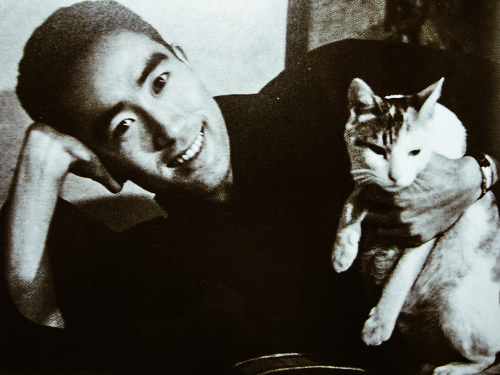
photo credits: paola1chi.blogspot.com
Grandmother never allowed her grandson to leave the house until Hiraoka escaped from her grandmother stolen from her mother in 1934.
These and other experiences of childhood and adolescence are reported in the novel Confessions of a mask of 1949, in-depth self-analysis of his life.
From 1931 he began studying Gakushūin, the school of the Peers, always thanks to the advice of his grandmother. In this school, most of the students were part of the aristocracy. Those who were not aristocrats were called "outsiders". With this school, students became more warriors than writers and Kimitake Hiraoka's poems were published in the school magazine.
His first work, Hanazakari no Mori (The forest in bloom) was completed in 1941 and was heavily influenced by the Japanese romantic school (Nihon romanha). The professor of Gakushūin letters, Shimizu Fumio, immediately noticed his classical style. Bungei Bunka magazine published the story and from there he began to use the pseudonym Yukio Mishima. Hanazakari no Mori will be published in book form together with other short stories: its success will make the name of the writer known to the public for the first time.
After school, convinced by his father, he enrolled in law university. After graduation, he won a competition as a state official at the Ministry of Finance. During the period of work at the Ministry, he lived a "double life": state official until the evening and writer at night, sleeping no more than three or four hours.
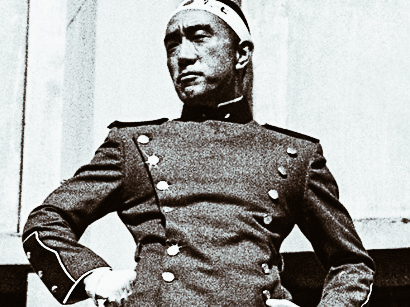
photo credits: oltrelalinea.news
Early works
In 1946 he presented two of his works to the Nobel Prize winner Yasunari Kawabata. Between the two there was a feeling of profound esteem more than that which actually binds teacher and disciple.
In 1948 he began his work at the Kindai Bungaku magazine, linked to leftist circles. Yukio Mishima always tried to avoid any political argument in his novels, apart from the descriptive character that we find in After the feast and the Horses on the run, in fact, Yukio Mishima became part of the leftist group only to get more contacts with the intellectual world.
After the publication of Kamen no Kokuhaku (Confessions of a mask) in June 1949, he received recognition from critics and sales. Between 1950 and 1951 he published three important novels: Thirst for love, The Green Age (1950) and Forbidden Colors (1951). In the novel Thirst for the love he returns to the third-person narrative.
In 1951 he visited the United States, Brazil and Europe as a correspondent for Asahi Shinbun. In Shiosai (The voice of the waves 1954) and the trip to Greece marked the beginning of a new life for Mishima: from 1955 he began to devote himself to bodybuilding, and to kendo.
Yukio Mishima: marriage and sexuality
Yukio Mishima got married on 11 June 1958 with Yoko Sugiyama, under the advice of the family; two children were born from the union, Noriko (2 June 1959) and Ichiro (2 May 1962).
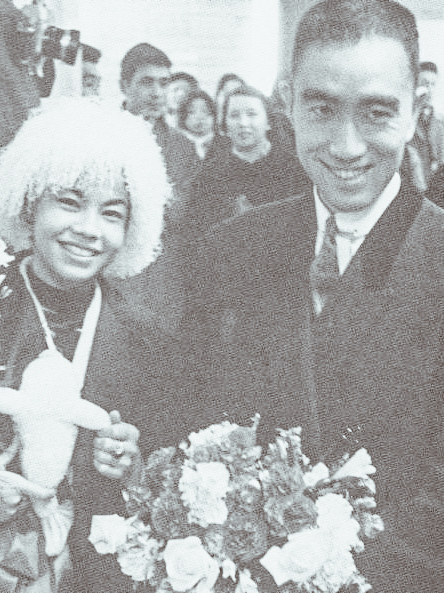
photo credits: paola1chi.blogspot.com
Yukio Mishima's sexual orientation was highly controversial, due to some of his visits to Japanese gay bars. Many testimonies saw him as the protagonist of homosexual relationships with for example the writer Jiro Fukushima. The latter wrote a novel describing very explicit details of the relationship with Mishima. At that point, Mishima's children started a fight for violating privacy.
At that time Yukio Mishima entered into a relationship with Eikoh Hosoe and became the model for some of his photos of Bara-kei, 1961–1962. Abroad, the title will be Killed by Roses or Ordeal by Roses.
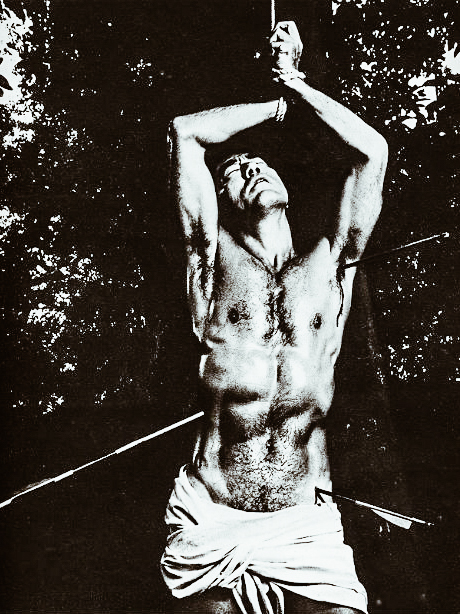
photo credits: dangerousminds.net
He began his acting career in the film based on Yūkoku (Patriotism, 1966), the story of a young officer who decides to do seppuku with his wife. The film was directed, written and played by him. In addition to this, his photos as a bodybuilder and kendōka are published in various newspapers, as well as news of the training periods together with the Jieitai (Japanese Self-Defense Force) and the foundation of the Tate no Kai (Shield Society), his "private army. "
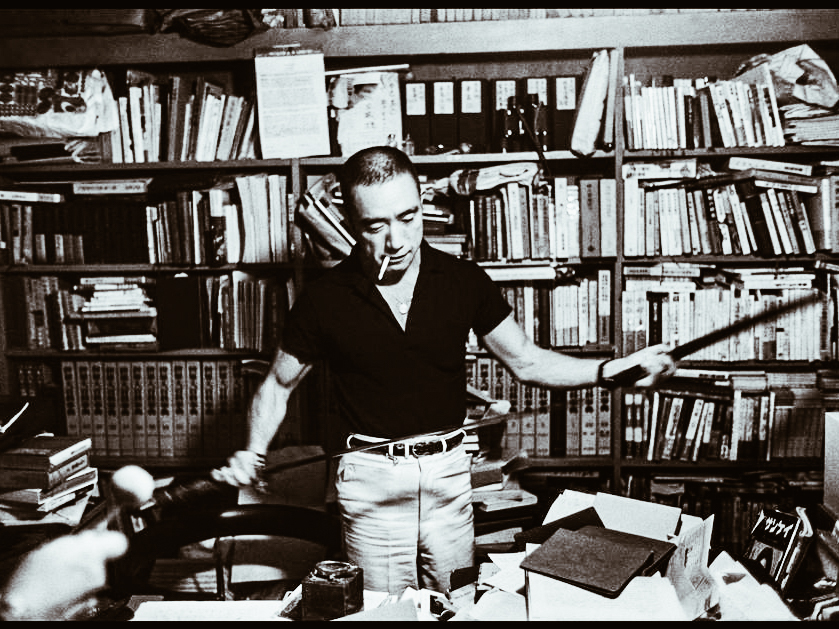
photo credits: lintellettualedissidente.it
The tetralogy Hōjō no Umi (The sea of fertility) began in 1965. The last volume is published in 1970.
Suicide
"A life that suffices to be face to face with death to be scarred and broken, perhaps it is nothing but a fragile glass." (from Spiritual lessons for young samurai and other writings)
Yukio Mishima had always been obsessed with the idea of death and decided to combine this unease with the ideas of traditionalist patriotism.
On November 25, 1970, at 45, Yukio Mishima gathered the most important members of the Tate no Kai ("Association of Shields"), which he himself had found, and occupied the office of General Mashita of the self-defence army. From the balcony of the office, in front of a thousand men of the infantry regiment, as well as newspapers and televisions, he gave his last speech: exaltation of the spirit of Japan, condemnation of the 1947 constitution and the San Francisco treaty, which they made the Japanese national feeling enslaved by westernization.
«We must die to restore Japan's true face! Is it good to have a life so dear to let the spirit die? What army is this that has no more noble values than life? Now we will testify to the existence of a higher value than attachment to life. This value is not freedom! It's not a democracy! It's Japan! It’s Japan, the country of history and traditions that we love. "It was November 25, 1970 in front of an audience of young soldiers, in which after this speech and after praising the Emperor, Yukio Mishima practised seppuku by piercing his belly and then having his head beheaded. Together with him, his most trusted friend and disciple, Masakatsu Morita, committed suicide too.
The choice of Seppuku
The date and manner of killing himself were not random, but chosen as the whole meaning of his life, the purpose for which it had been devoted. It all ended with the extreme act of the Japanese man: seppuku. This sacrifice was based on Wang Yangming's Chinese teaching that "knowing and not acting means not knowing".
Just before seppuku, he had delivered to the publisher the last part of the tetralogy The sea of fertility, which was however completed three months earlier, but with the date "November 25, 1970" just as a testament. He had organized his departure from the scene very coldly, he also left a note: "Human life is short, but I would like to live forever."
The three survivors went to justice and were sentenced to four years in prison for occupying the ministry, but were released for good conduct after a few months.
Summarizing it all, we can say that according to Yukio Mishima the relationships between human beings are reduced to a cloudy and confused mixture of good and evil, of trust and diffidence, distilled in small doses. Despite all this, if the group of people manages to make a pact based on a purity of mind, consumerism, relativism, nihilism and individualism become nothing. Yukio Mishima managed to transform his existence into something more important and profound, thanks to the way he had decided to live and die.

photo credits: wikimedia.org
His works
Romances
The forest in bloom (花 ざ か り の 森 - Hanazakari no mori, 1944)
The doll's house (雛 の 宿 - Hina no yado 1946-1963)
Confessions of a mask (仮 面 の 告白 - Kamen no kokuhaku, 1949)
Thirst for love (愛 の 渇 き - Ai no kawaki, 1950)
The Green Age (青 の 時代 - Ao no jidai, 1950)
Forbidden colours (禁 色 - Kinjiki, 1951)
Midsummer Death (真 夏 の 死 - Manatsu no shi, 1952)
The voice of the waves (潮 騒 - Shiosai, 1954)
A locked room (鍵 の か か る 部屋 - Kagi no kakaru heya, 1954)
Five modern Nō (近代 能 楽 集 - Kindai nōgaku shū, 1956)
The golden pavilion (金 閣 寺 - Kinkakuji, 1956)
A wavering virtue (美 徳 の よ ろ め き - Bitoku no yoromeki, 2007)
Kyōko's house (鏡子 の 家 - Kyōko no Ie, 1959)
After the banquet (宴 の あ と - Utage no ato, 1960)
Animal’s playthings (獣 の 戯 れ - Kemono no tawamure, 1961)
Wonderful star (美 し い 星 - Utsukushii Hoshi, 1962)
The taste of glory (午後 の 曳 航 - Gogo no eiko, 1963)
The school of meat - Nikutai No Gakko, 1963
The sword (1963)
Music (音 楽 - Ongaku, 1965)
Madame de Sade (サ ド 侯爵夫人 - Sado kōshaku fujin, 1965)
The voice of heroic spirits (英 霊 霊 聲 - Eirei no koe, 1966)
Evening dress (夜 会 服 - Yakaifuku), (1966-1967)
My friend Hitler (わ が 友 ヒ ッ ト ラ ー - Waga Tomo Hittorā, 1968)
The sea of fertility (豊 饒 の 海 - Hōjō no umi), 1968-1970, tetralogy composed of:
Spring snow (春 の 雪 - Haru no yuki, 1968)
Horses on the run (奔馬 - Honba, 1969)
The temple of dawn (暁 の 寺 - Akatsuki no tera, 1970)
The mirror of deception (天人 五 衰 - Tennin gosui, 1970)
Middle Ages & The Palace of the Roaring Deer (Mishima, history and secret affairs) (Chūsei, 1945–46 + Rokumeikan 1956)
Essays
1967 - Apollo's cup (ア ポ ロ の 杯 - Aporo no Sakazuki, 1967)
The way of the samurai (葉 隠 入門 - Hagakure nyūmon, 1967)
Sun and steel (太陽 と 鉄 - Taiyō to tetsu, 1970)
1988 - Spiritual lessons for young Samurai (若 き サ ム ラ イ の た め の 精神 講話 - Wakaki Samurai no tameno Seishin kowa, 1970): a collection of essays including the proclamation read by the author a few moments before the ritual suicide.
1997 - Letters 1945-1970 (川端康成 ・ 三島 由 紀 夫 往復 書簡 - Kawabata Yasunari ・ Mishima Yukio Ohfuku Shokan, 1997), SE (ISBN 88-7710-543-7): correspondence between Mishima and Yasunari Kawabata.
Nikken Cutlery makes you feel like real samurai
Nikken Cutlery not only decided to explain to you how Oda Nobunaga and the greatest Samurai cut the tags from their clothes, but they also created the way to make you do the same nowadays!
Nikken Cutlery makes you feel like real samurai
Autore: SaiKaiAngel | Fonte: Soranews24.com
In ancient times, the Samurai never left the house without their sword, because they didn't know when they should defend themselves. Nowadays, luckily it's less likely to meet enemies or brigands on the street (hopefully!), but still, the need of having to cut something or open a snack could happen. How nice would it be to be able to open a snack with this set of mini scissors in the shape of the real and historic katana? Enjoy the samurai spirit into everyday life!
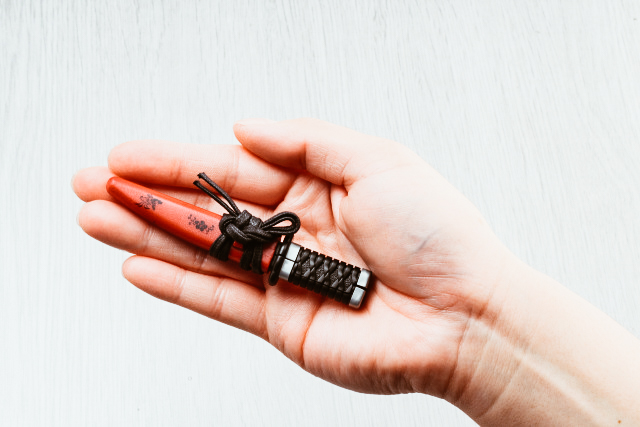

If you look carefully, you can also notice the famous hamon on the metal of these cutters in the shape of a katana, do you know what it is? The hamon (刃 文) is the line of tempering that characterizes the katana obtained through differentiated tempering.
A particular type of "differentiated" hardening between the back and the wire produces a slightly different colour line on the cutting edge, called hamon (刃 文). The shape of the hamon is an identifying sign of the age of the blade and of the author. In fact, the real katana connoisseur, looks at the hamon immediately. Obviously, Nikken Cutlery has also remained faithful to this for these special cutters.


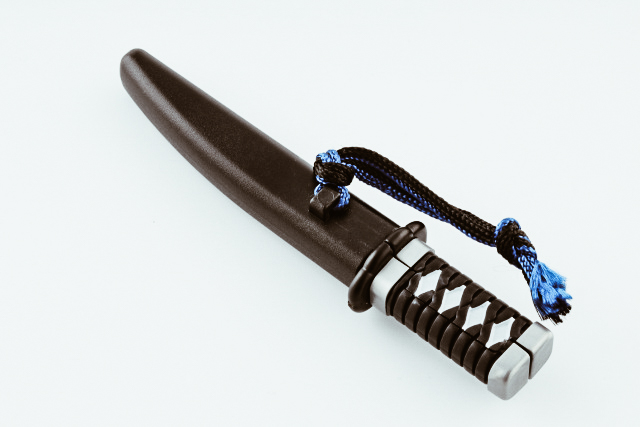
Nikken Cutlery, which is based in the city of Seki in the prefecture of Gifu, offers three models:
- First model: based on the Heshikiri Hasebe, the famous sword of the warlord Oda Nobunaga.
- Second model: Izumi no Kami Kanesada from Hijikata Toshizo, deputy commander of the 19th century Shinsengumi group.
- Third model: it comes from Shinsengumi, in the form of Yamato no Kamiyasusada, the sword of Okita Soji, a member of Shinsengumi.
And there’s more! The mini katana is equipped with a mini katanabukuro (the cloth container), with the blue and white Shinsengumi motif for the swords of Hijikata and Okita, or purple for the Nobunaga katanas.

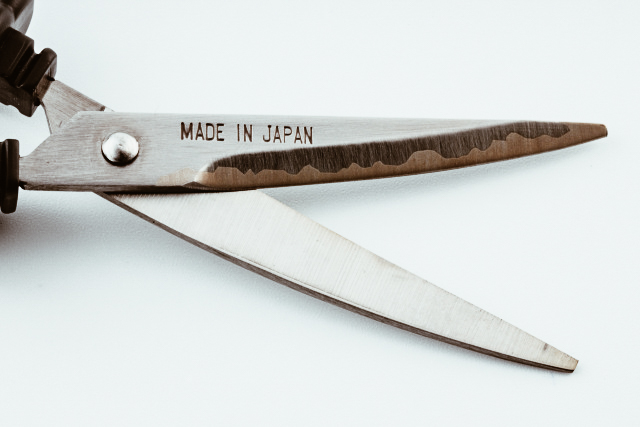
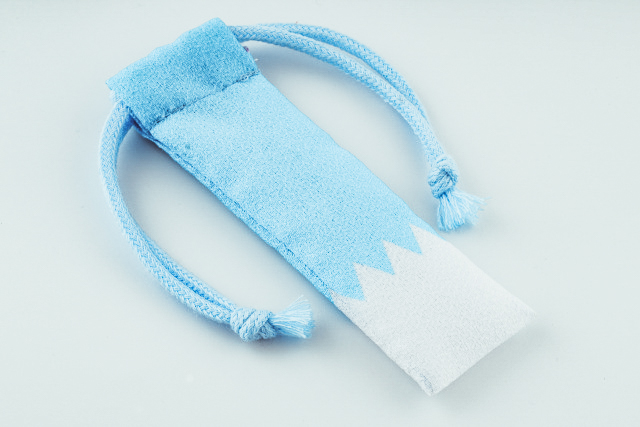
And again! Nikken Cutlery has decided to make you a Samurai also in the office. It’s true, their skills have also expanded in the creation of office tools and we are talking about surprising katana-shaped letter openers with the possibility of personalized engravings. So you want to open the letters like a real samurai? Not a problem thanks to Nikken Cutlery!

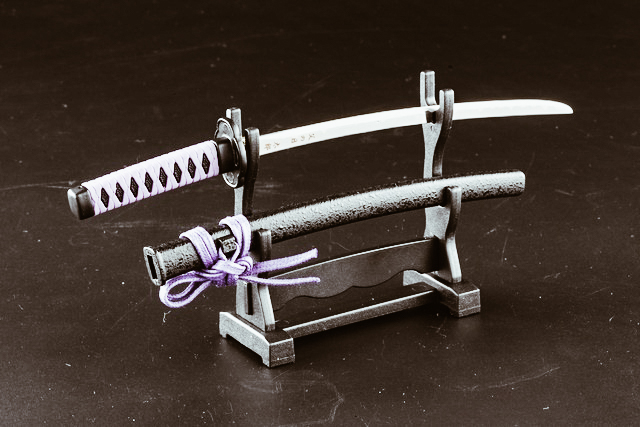
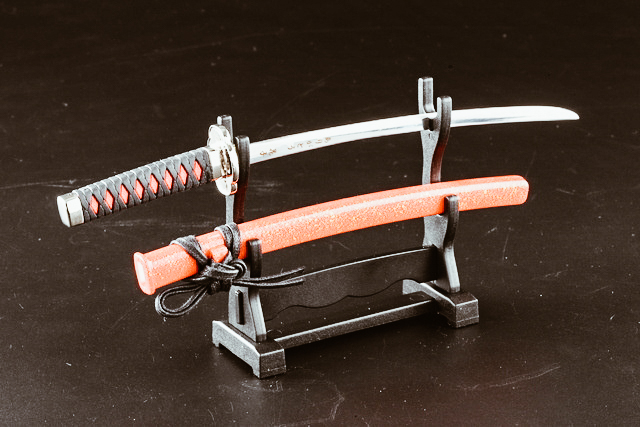
Also here you can choose among three varieties of katana letter openers. Each of them is equipped with support, so you can show your warrior spirit to everyone and with pride!
- First model: "Iron Cloud". Its handle is black and gold, and its sheath seems coated with lacquer since it is a glossy black with golden sparkles.
- Second model: "Scarlet Gold Cloud", with an elegant black and red hilt and a red sheath with splashes of gold.
- Third model: "Black Grains of Rock", which has a purple and black hilt and a black sheath with a rough texture that appears to have been roughly carved from lava rock.
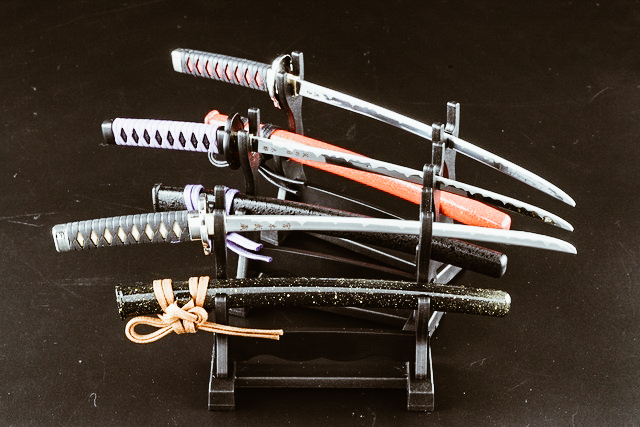
All sheaths are hand-painted by craftsmen, so each of them will be unique, as the blades are always created by Seki craftsmen. Each blade will have a very tapered edge but don't worry, they are specially designed not to cut human skin. It is not a real weapon, be quiet warriors! In addition, the blade is carefully hardened with a heat treatment that uses traditional blacksmith techniques and makes them resistant.
In case you are interested in the very personal engraving, these are made on the blade near the hilt and they can be names, messages, given all within eight kanji, hiragana and katakana characters or 15 Roman letters and numbers including spaces.

Don’t miss the opportunity to dress your day with Japanese tradition, rely on Nikken Cutlery!
For more information on these products: Nikken Cutlery official site | Twitter
TENOHA &| TASTE: it's Tanabata time
We can come back to love each other in compliance with the rules with the TANABATA aperitivo at TENOHA Milano! Summer has already begun and what better way to start again than by celebrating the Japanese Star Festival? As always, TENOHA makes your journey to Japan lighter and it always makes you feel part of the Rising Sun, thanks to its events and its food prepared especially for you by true Japanese chefs. By popular demand, the special TANABATA aperitivo is back again this year!
E' tempo di Tanabata da TENOHA Milano
Autore: SaiKaiAngel

Are you feeling more Vega or Altair? We know that you want to dream and cross the Milky Way to meet your loved one, but also to write your desire to see it come true. Here at TENOHA Milan you can do it! Write your wishes on the Tanzaku (those wonderful colored sheets of paper fluttering attached to the bamboo branches) and then see it dance in the wind among the leaves of the bamboo tree.
Because Tanabata (七夕 "seventh night") is the feast of the stars in love, a romantic feast that if TENOHA Milan weren't there you could only celebrate in Japan. But luckily, TENOHA Milan exists and it is that corner of Japan that you have always wanted. Live a romantic story, special days, feel Vega or Altair and come here to TENOHA Milan!
Ok the romance, but do we want to talk about what you can taste during TANABATA?
TENOHA Milan prepared for you 1 Drink + Aperitif box + Takoyaki (Japanese octopus meatballs) complete with show cooking + Kakigori (Japanese granita) All accompanied by Asahi Beer 20 ml.
Information
Where: TENOHA MILANO Via Vigevano, 18, 20144 Milano
When: From July 7th to 12th from 18.00 to 20.30
Cost: 12€
Event powered by Asahi Super Dry
Reservation is preferable, here you can find the phone number and email to reserve your seats: (+39) 02 8088 9868 | taste@tenoha.it
For more information: https://www.tenoha.it/events/aperitivo-tanabata/
MONDE, the artist who creates a little Tokyo in your house
Monde, a famous Japanese designer recreates special dioramas for our libraries. First of all, what is a diorama? A diorama is the reduced-scale reproduction of scenography that recreates different settings. The diorama is also called plastic, but it is not used in the architectural field. The word Diorama itself means "to look through" and it’s in fact the reproduction of a scenography inside an open box that allows you to admire its content.
MONDE, the artist who creates a little Tokyo in your house
Autore: SaiKaiAngel | Photo Credits: MONDE Twitter
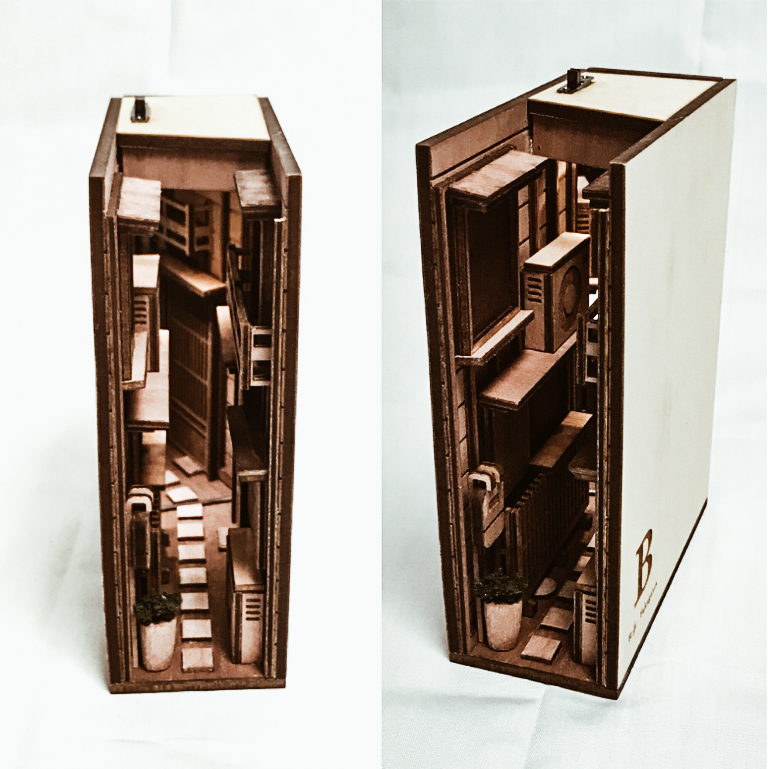
Initially, the diorama presupposed the reproduction of the scenography inside a semi-open "box" equipped with a glass in order to admire its contents. Dioramas differ from plastic models also in the precision of their details, extremely accurate.
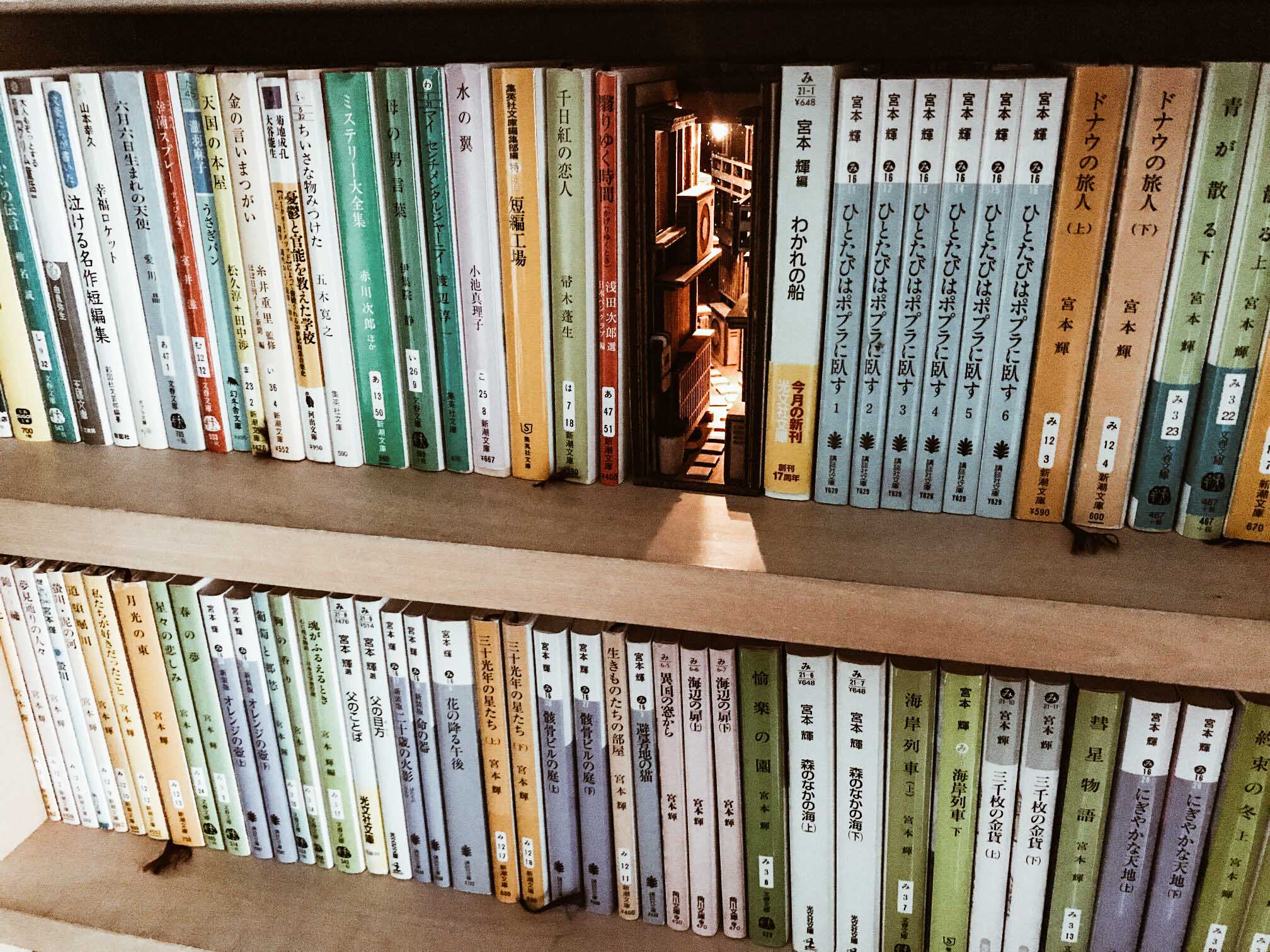
Monde decided to create Dioramas and use them as bookends. These are magical 3D dioramas that allow us to experience a world apart and transform even the simplest of bookcases into something unique. Just look at them carefully to fall in love and realize that the work of art is perfect even in the smallest details. If you don’t have the opportunity to experience the alleys of Tokyo even in their most minute details, you can turn your library into a secret passage to Japan.
Depending on the diorama, you will find an arrangement of plants and lights made with different materials, which actually create the illusion of scrutinizing a dimly lit Japanese alley, but directly from your home! The artist told Buzzfeed News Japan, "I thought it would be interesting to create a path in the gap between the shelves" and in fact, his idea proved to be not only brilliant but also innovative!
The artist created this project for the Design Festa, an international art event in Tokyo, with "detailed replicas of the winding and narrow alleys of Japan." Monde creates objects inspired not only by the city but also by animals and insects. Do you want to have these small universes at home? You can contact the artist directly on his Twitter profile
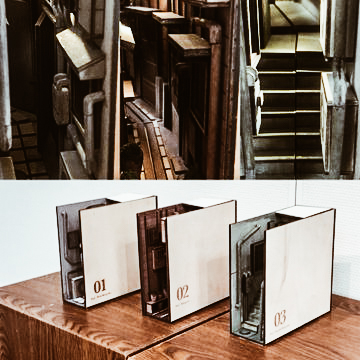
What are you waiting for? Monde has created the way to have Japan in your homes. Fall in love with the alleys of Tokyo and enjoy them comfortably seated on the sofa. Tokyo has never been so close thanks to Monde.
Japan History: Maeda Toshiie
Maeda Toshiie was born on January 15 1538 (now Nagoya) as the fourth son of Maeda Toshimasa who held Arako Castle and died on April 27 1599. He was known to be one of the main generals of Oda Nobunaga after the Sengoku period.
Maeda Toshiie, the head of the Maeda clan
Author: SaiKaiAngel
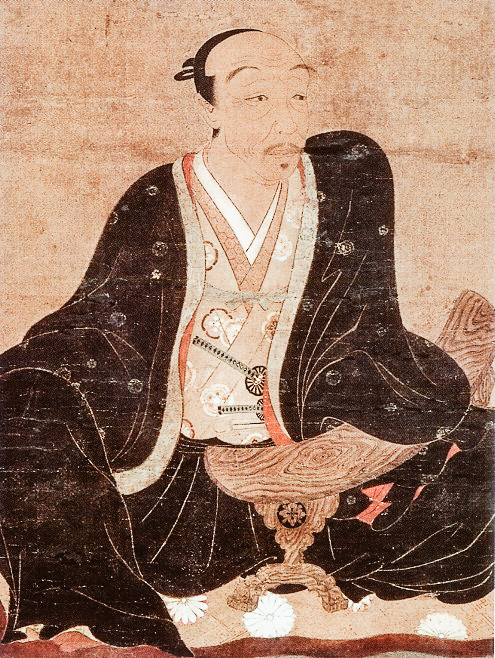
photo credits: wikimedia.org
His father was Maeda Toshimasa and his wife Maeda Matsu. Fourth of seven brothers, his childhood name was "Inuchiyo" and his favourite weapon was a yari, which is why Maeda Toshiie was known as "Yari no Mataza" or Matazaemon. The highest grade he received was that of Great Councilor Dainagon.
By order of Nobunaga, Maeda Toshiie was rewarded with the appointment as the head of the Maeda clan, despite having four older brothers. This position was received in 1560 upon the death of his father. Just like Oda Nobunaga, Toshiie was also a criminal and seems to have become, in his youth, also a friend of Kinoshita Tokichiro, more famous with the name of Toyotomi Hideyoshi. It seems that Toshiie was called Inu (dog) by Nobunaga because of his reserved and severe nature, in contrast to Hideyoshi's talkative nature.
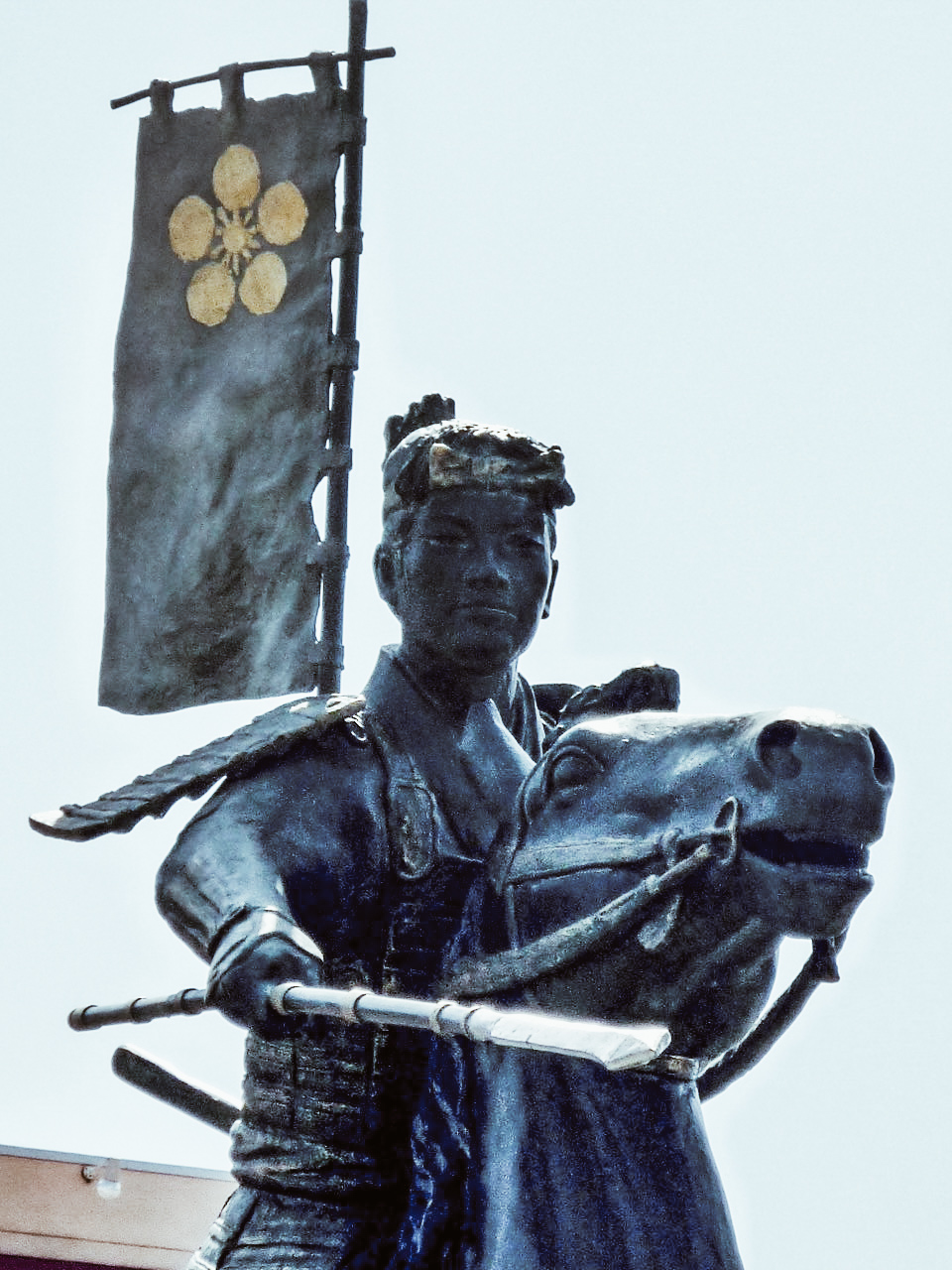
photo credits: samurai-world.com
Military life
Toshiie began his career as a member of akahoro-shū under the personal command of Oda Nobunaga. Later he became an infantry captain (ashigaru taishō) always in the army of Oda Nobunaga. During his military career, Toshiie met many important figures, such as Hashiba Hideyoshi, Sassa Narimasa, Akechi Mitsuhide, Takayama Ukon and many others that we have previously seen in our blog. Maeda Toshiie was also Tokugawa Ieyasu's eternal rival. After defeating the Asakura clan, Maeda fought under Shibata Katsuie in the Hokuriku area.
Maeda Toshiie participated in various war situations: we see him in the battle of Okehazama in 1560 in the siege of Inabayama in 1567, in the battle of Anegawa in 1570, in Nagashino in 1575 and in Tedorigawa in 1577, in the siege of Suemori in 1584 and of Odawara in 1590. Eventually, he was granted the fief of Fuchu and a han (Kaga domain) that crossed the provinces of Noto and Kaga. Despite its small size, Kaga was a highly productive province that would eventually turn into Japan's wealthiest han in the Edo period, with a net worth of 1 million koku.
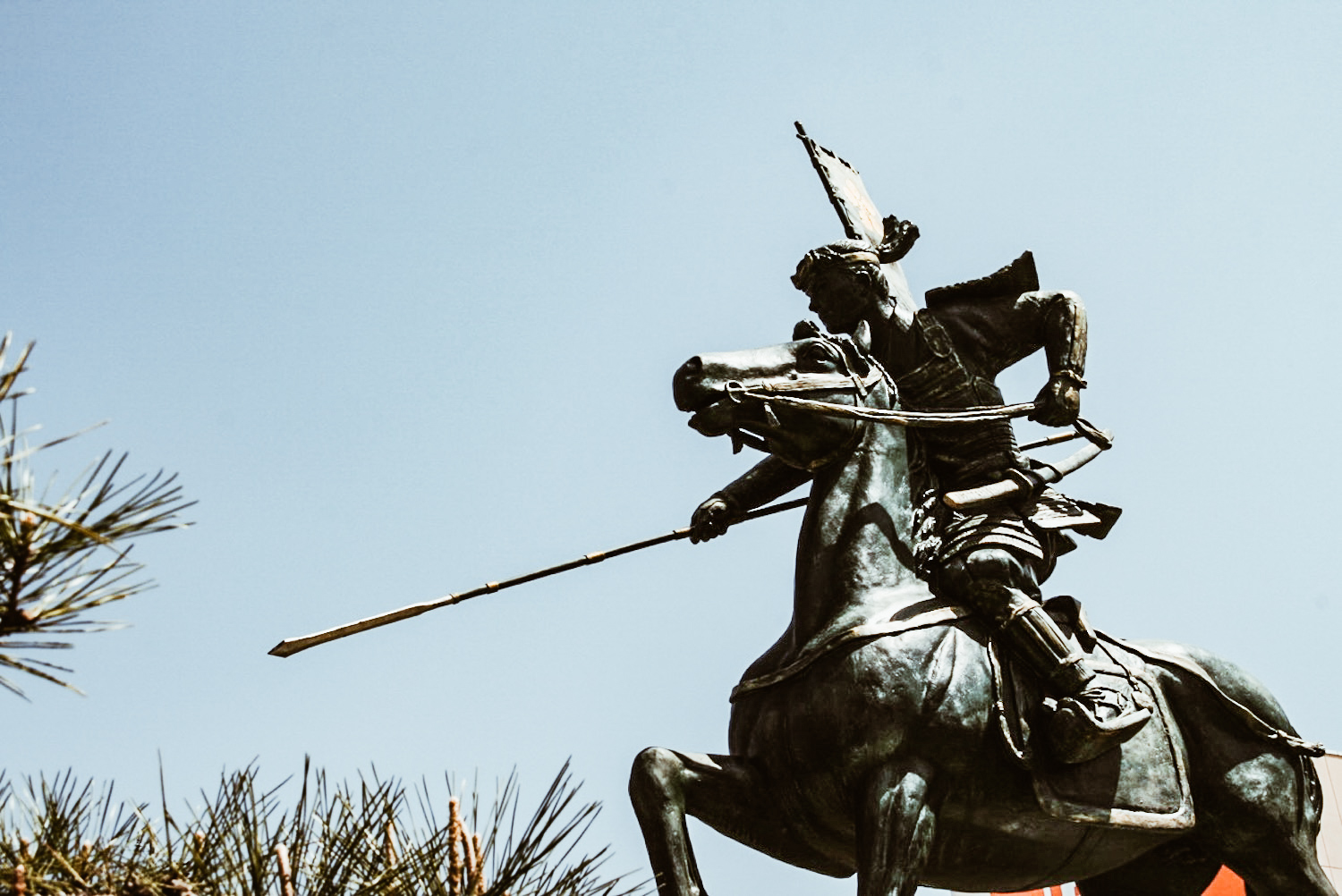
photo credits: samurai-world.com
Maeda Toshiie had a central group of very capable senior vassals. Some, such as Murai Nagayori and Okumura Nagatomi, maintained a long tradition with the Maeda.
After Nobunaga's assassination in Honnō-ji, Akechi Mitsuhide and Mitsuhide's subsequent defeat of Hideyoshi, Maeda Toshiie fought Hideyoshi under Shibata's command in the battle of Shizugatake. After the defeat of Shibata, Toshiie worked for Hideyoshi and became one of his main generals. Later Maeda Toshiie was forced to fight another of his friends, Sassa Narimasa. Narimasa was shot down by Toshiie following Maeda's great victory in the battle of Suemori Castle. Before he died in 1598, Hideyoshi appointed Maeda Toshiie to the council of the Five Elders to support Toyotomi Hideyori until he was old enough to take control. Despite this, Maeda Toshiie only managed to support Hideyori for a year before he died. Maeda Toshiie's successor was his son Toshinaga.
The Maeda Family
Maeda Toshiie's family played a very important role in her life. His wife, Maeda Matsu, very famous because being an expert in martial arts, was very decisive for Toshiie's rise to success.
Maeda Toshiie's older brother, Maeda Toshihisa, adopted Maeda Toshimasu (more famously by the name Maeda Keiji). Maeda Toshimasu served under Oda Nobunaga together with his uncle. Toshimasu was originally intended to inherit the direction of the Maeda family; however, after Oda Nobunaga replaced Toshihisa with Toshiie as head of the Maeda family, he lost this position. Perhaps because of this loss of inheritance, Toshimasu was well known for the constant quarrels with his uncle Maeda Toshiie.
Maeda Toshiie died in 1658 at the age of 64, and her grave is in the Maeda cemetery of Nodayama in Kanazawa.
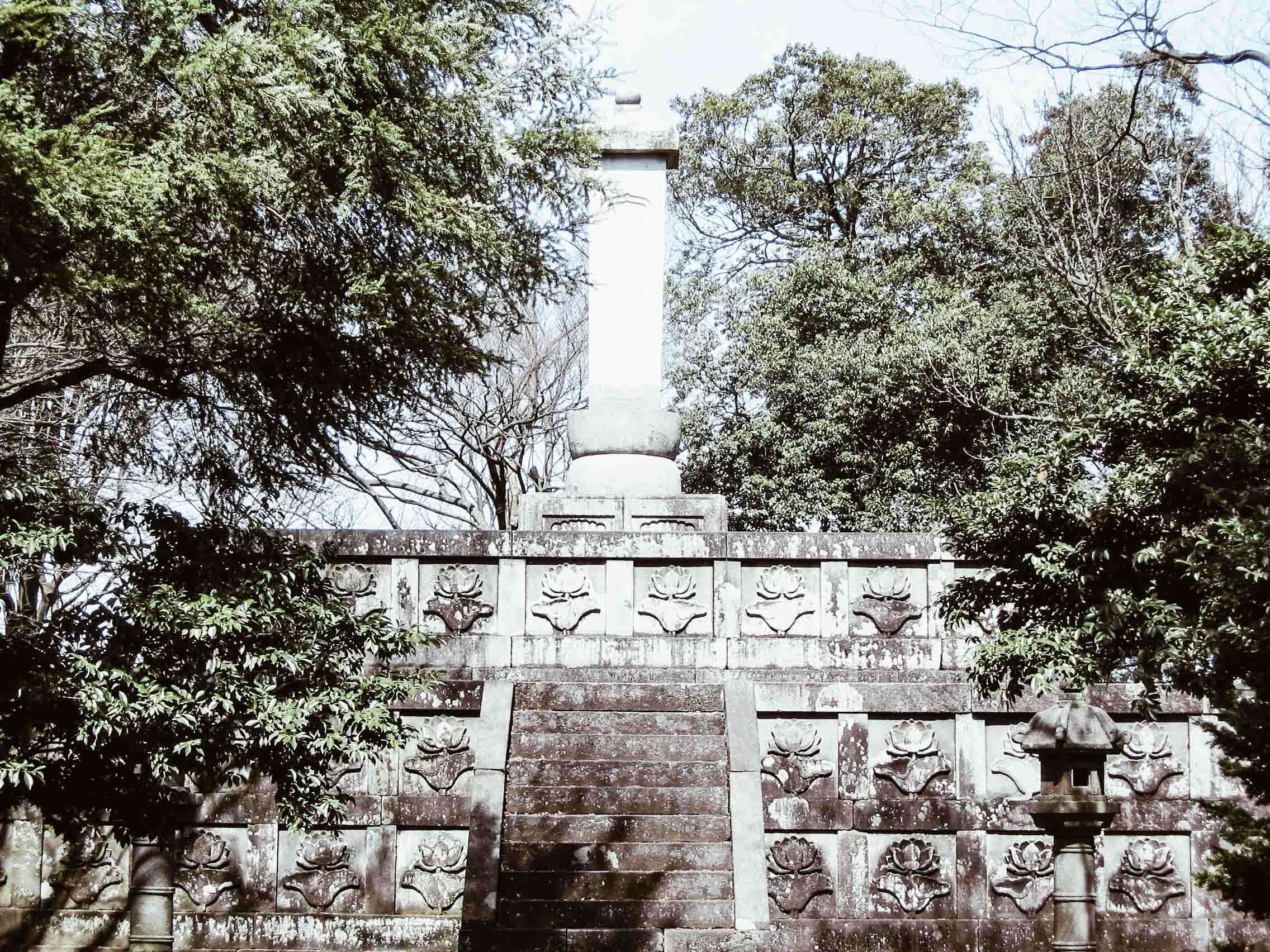 photo credits: wikimedia.org
photo credits: wikimedia.org
Everything there is to know about Maneki Neko
Surely you have seen Maneki Neko, whether or not you are a fan of Japanese tradition. Shall we give this wonderful and lucky Japanese kitten special attention? Let's take a closer look at them.
Maneki Neko, the beckoning cat from Japan
Author: SaiKaiAngel
Also known as "lucky cat" is famous all over the world. The Maneki-Neko is a true Japanese symbol, with origins in Tokyo during the Edo period.
Originally Maneki Neko were made of wood, metal, porcelain or cast iron. Today they can be found in all kinds of materials, especially plastic.
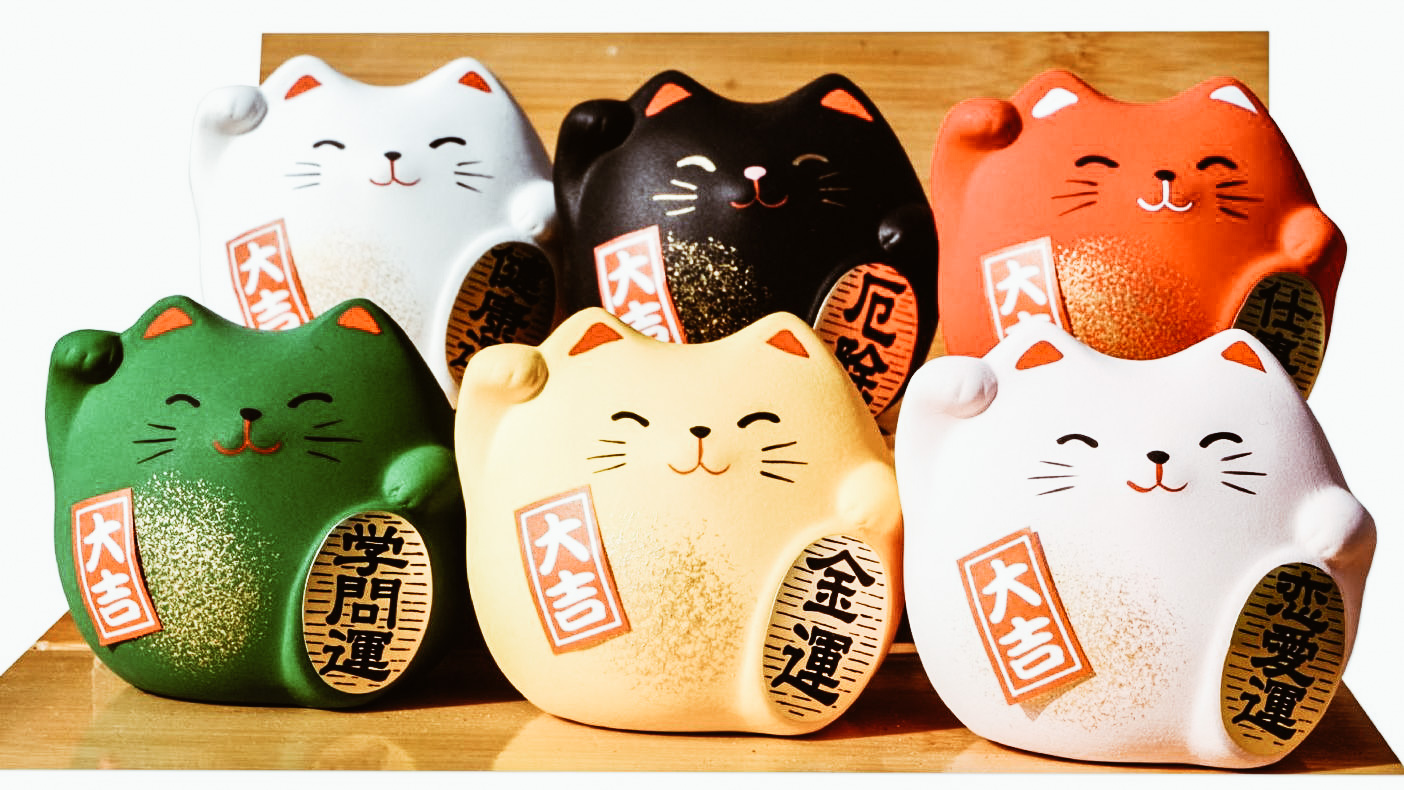
photo credits: www.dailyartmagazine.com
The origins
The origins are shrouded in mystery. There are some tales and the most famous is that of the samurai who, sitting in the rain under a large tree in front of a temple, was called with a nod of his paw. The samurai then headed towards him and at that very moment, a flash of light struck the tree under which he had been a few moments earlier. The cat then saved the samurai from certain death.
Another story tells of a shopkeeper who caught a cat in the rain, and the cat sat down in front of the shop, beckoning the customers to come in, as a sign of thanks.
Another legend, perhaps a little more bizarre, revolves around a courtesan who loved her domestic cat. The owner convinced that the cat was possessed, cut off his head in an attempt to exorcise it, just as a snake was about to bite the courtesan. The decapitated head flew in the air and landed on the snake, killing it instantly and saving the girl. The girl felt desperate because of the loss and, to give her a smile someone made her a statue of her cat, it seems that so was born the first Maneki-Neko.
The differences between Maneki Neko
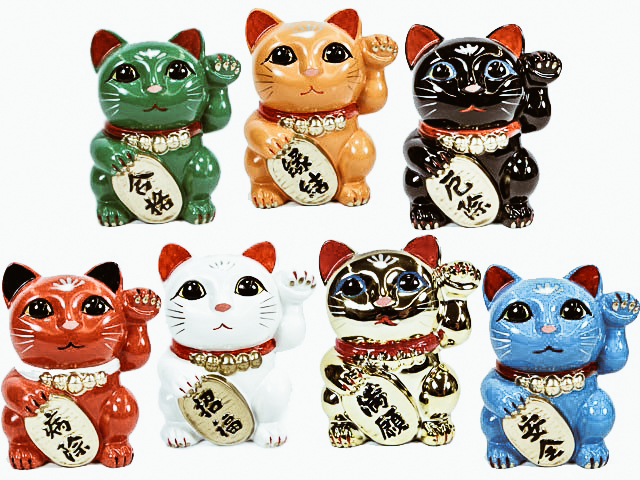
photo credits: @punamkhokhar
The cats all look similar, but if you look closely, you will discover even very small variations that change their meaning.
For example, depending on the position of the paw, Maneki Neko has different meanings:
- Left leg raised: attracts customers and good business. So Maneki Neko with the left paw raised is suitable for businesses, shops and activities that take place mainly at night such as nightclubs, bars and discos.
- Right leg raised: wish money and good luck.
- Both legs raised: it can mean "double luck!" and protection from bad luck, although the gesture can also be seen as a celebratory cheer. Obviously the legs must be at a different height because at the same height they would mean "surrendered" and obviously this is not the case of our Maneki Neko.
We can also occasionally find a coin together with the cat and this, of course, represents prosperity, wealth and money.
The bib and bell are generally associated with protection and abundance.
Who to give the Maneki Neko to?
Obviously, depending on the person we want to pay tribute to, it will be positioned differently. How to find the right place? Read here:
- At home: it should be located in the southeast part of the house, which is the wealth/money area.
- For work: Maneki Neko is usually kept close to the entrances so that people who enter can actually see it. If this is not possible, it can be kept in the northeast area of the business premises.
- For offices: place your Maneki Neko as close to the office as possible.
Of course, even depending on the colour, it has a different meaning, let's go see them all:
- Tricolour: attracts good luck, wealth, prosperity.
- White: the color of purity, white Maneki Neko attract purity and happiness.
- Black: they are seen as guards. They protect against negative energies and evil. They also help drive out stalkers and provide security, comfort and peace.
- Golden colour is associated with wealth and money. This Maneki Neko attracts material and monetary benefits and therefore can be found a lot in shops, restaurants and other workplaces.
- Red: red, like black, is a protector and is used to protect against evil and disease. It is good to keep one in the children's room.
- Pink: pink is the colour of love, so this Maneki Neko attracts love and romance.
- Green: this Maneki Neko helps students to increase their concentration towards their studies, protecting them from diseases and helping them to heal if they need it.
- Blue: attracts peace, harmony and happiness for family members.
Three ways to say "I Love you"
"Ti Amo, I love you" How do you say that in Japanese? There are so many kinds of love, why should we express love only one way? The Japanese know a lot, they know that every kind of love needs a way to be expressed, a completely personal way.
Ti Amo / I Love you, here's how to say it in Japanese
Author: SaiKaiAngel | Source: SoraNews24
All this, you think, happens in a country that is seen as "cold and distant". Perhaps, thinking about this, we should understand that cold and distant is not, indeed. It is a country that gives the right importance to history, tradition and feelings.
Let's start looking at all the ways of showing love in Japanese, let's analyze them one by one.
1. Suki - I like you

This is the most used and most famous way because it is found in many conversations of Japanese animation. We analyze it first also because it is the least "deep", in fact, more than love, it can also mean "I like". You can safely say "Ramen ga suki desu" that no one will see you as a fool in love with a plate of ramen, but everyone will understand that you like ramen. So you can use suki to express an appreciation for a singer or an actor too.
That's why suki can be confusing. If you hear this word, you might run into the question of whether you really like us as a person or just as a ramen dish. It's a very flexible meaning, not at all secure, yet it is used at the beginning of every love story. When you want to propose to someone, you can use suki desu to do so. Very important at that point, it will be the WAY in which you do it, you have to make the other person understand that you have serious intentions and you are not just a dish of ramen. It takes conviction in the voice, it's not a simple "I like". With a great conviction, then you will have the right colour of falling in love.
2. Koi - I love you

We're not talking about the carp, but the second way the Japanese use to talk about love. We're in the field of romantic love here. Koi is the young and passionate emotion, but it's rarely used to say "I love you". Maybe we can bring it closer to "I love you" by Americans, which can mean both "love you" and "deeply care about you". However, the verb koi suru is closer to "to be in love" or "to be romantically involved". In fact, the word Koi is used for Koibito meaning lover.
3. Ai - Ti Amo

And here we come to the most famous, the most used term for the word Love.
Ai is a noun that means "love", but it can be used for something more than just romantic affection. Ai or the variant aijo, are also used to talk about the concepts of love for the family, for a platonic love or for all humanity. Used as a verb, it becomes ai suru.
Then why do we use suki desu to confess our love? Simply because ai is a much more serious and committed feeling. Ai suru would be a bit... frightening, especially for a story that's just begun. We have to go step by step and Suki desu is what allows us to do that. It would also be better to change the verb suru to shiteiru. By telling your partner to the shiteiru, you're showing an ongoing love, not just an initial crush. As far as I'm concerned, it's the term I like best, also because it's the first one I've ever heard.

What does that tell us? That Japanese is a very romantic language despite what you hear. Are Japanese cold? All impression. Japanese can give the right meaning and depth to anything, even love. What term would you use for your love?







